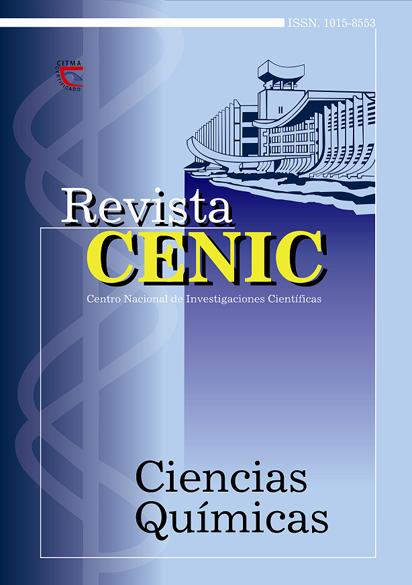Cephalosporins: synthesis methods and molecular modeling studies
Abstract
Cephalosporins are the most commonly used antibiotics in the treatment of infectious diseases because
of their broad actibacterial spectrum, good pharmacokinetics properties and relatively low toxicity. The search of new
cephalosporins effective against bacterial pathogens is a current research. In the present paper, the synthetic methods
based on of acylation of amino function at C-7β position and the procedures to introduce different substituents at C-3
position of cefalosporanic core are rewieved. In addition, a survey of the protective groups most often used to temporarily
block the molecule reactive centers during the cephalosporin synthesis is made. In the other hand, it is summarized
the molecular modeling studies made in order to know the electronic properties and structural chemical characteristics
of cephalosporins, as well as the molecular mechanisms that support its mode of action. As a conclusion it is possible to
assert that there is a wide array of procedures to make structural changes at C-3 and C-7β positions of the cefalosporanic
core, including the methods required for the protection of functional groups during cephalosporin synthesis. In relation
with the molecular modeling, there are a lot of publications where the molecular mechanics methods and quantum
chemistry have played a key role in determining the structural requirements that influence the antibacterial activity and
pharmacokinetics of these compounds. However, there are few structure-activity relationship studies, especially those
focused on guiding the chemical-synthetic efforts directed towards the search for new active structures.

Downloads
Published
How to Cite
Issue
Section
License

This work is licensed under a Creative Commons Attribution-NonCommercial-ShareAlike 4.0 International License.
Los autores que publican en esta revista están de acuerdo con los siguientes términos:
Los autores conservan los derechos de autor y garantizan a la revista el derecho de ser la primera publicación del trabajo al igual que licenciado bajo una Creative Commons Atribución-NoComercial-CompartirIgual 4.0 que permite a otros compartir el trabajo con un reconocimiento de la autoría del trabajo y la publicación inicial en esta revista.
Los autores pueden establecer por separado acuerdos adicionales para la distribución no exclusiva de la versión de la obra publicada en la revista (por ejemplo, situarlo en un repositorio institucional o publicarlo en un libro), con un reconocimiento de su publicación inicial en esta revista.
Se permite y se anima a los autores a difundir sus trabajos electrónicamente (por ejemplo, en repositorios institucionales o en su propio sitio web) antes y durante el proceso de envío, ya que puede dar lugar a intercambios productivos, así como a una citación más temprana y mayor de los trabajos publicados (Véase The Effect of Open Access) (en inglés).













